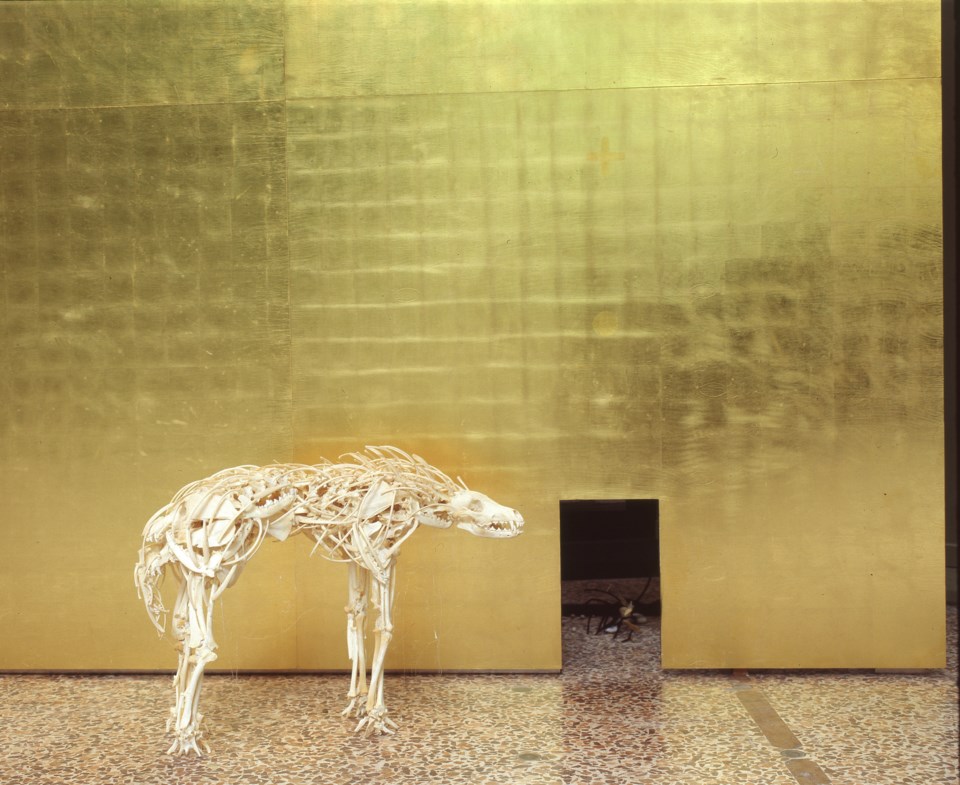Edward Poitras’ exhibition Revolution in the Rock Garden: A Treaty Four Art Action is coming to the Moose Jaw Museum & Art Gallery (MJM&AG) from Sept. 30 to Dec. 31 as a consideration of the history and legacy of Treaty 4.
In an unusual step, Edward Poitras is guest curating his exhibition within the Norma Lang Art Gallery, meaning that his personal preferences for the arrangement of his work will come through fully.
“(Poitras) approached me a few years ago about exhibiting here. I was thrilled,” said Jennifer McRorie, the executive director and curator of MJM&AG. “Then I heard through the grapevine that he had also talked to Yorkton and Swift Current. So, we got in contact and said, well, let’s partner on this.
“Then we reached out to Medicine Hat as well, because Edward wants to focus on the history and impact of Treaty 4, so he wanted all the venues for this exhibition to be on Treaty 4 land.”
The work presented will span the whole of Poitras’ work, from the late ‘70s to now, and will draw on public and private collections across Canada. Each exhibition encompasses multiple media — installations, video, painting, photography, and sculpture.
Poitras sees the project as a series of Treaty 4 “art actions” rather than a retrospective of his career. He is collaborating with the curators in each location to revisit and re-contextualize his work to fully consider the "colonial history" and effects of Treaty 4.
“Another interesting thing is that we’ve borrowed a historic 1903 watercolour from the Centre Du Patrimoine in Winnipeg. And it’s a painting that artist Henri Julien did of Edward’s Saulteaux great-great-grandfather,” McRorie said. “And he was present at the signing of Treaty 4. And actually, Edward’s other great-great-grandfather, Pierre Poitras, was a witness of the signing. He was part of Louie Riel’s provisional government.”
Poitras lives on George Gordon First Nation. The strong family connections he has to Treaty 4 are often referenced in his work. In addition, Poitras’ Métis/Cree father and Saulteaux mother met while at the Qu’Appelle Indian Residential School in Lebret, giving him another source of insight into colonial institutions.
In collaboration with New Southern Plains Métis Local 160, the text panels for Revolution in the Rock Garden will have three languages — English, French, and Michif.
The cultural heritages of the three languages will combine to offer perspective on cultural identity and place, spirituality, loss, and the manipulation of history.
Poitras’ art blends the strategy, iconography, and vocabulary of European design with Indigenous art, culture, and spirituality. He mixes natural material such as bone, feathers, and hide with modern technologies such as circuit boards, thereby expressing his identity and restoring life to it.
Poitras has been included in almost every major exhibition of Indigenous art in Canada since 1980, and has toured internationally, including being the first Indigenous artist to represent Canada at the international arts exhibition Venice Biennale in 1995.
A day of opening activities is planned for October 1, coinciding with a powwow planned by the Wakamow Aboriginal Community Association (WACA) for the National Day of Truth and Reconciliation.
The non-profit contemporary dance company New Dance Horizons, where Poitras is co-director, will perform twice — at 10 a.m. in Wakamow Valley, and at 7 p.m. at the Mae Wilson Theatre.
The opening reception will be at the MJM&AG from 3 to 5 p.m. Poitras will give an artist’s talk at 3 p.m. to start it off.




